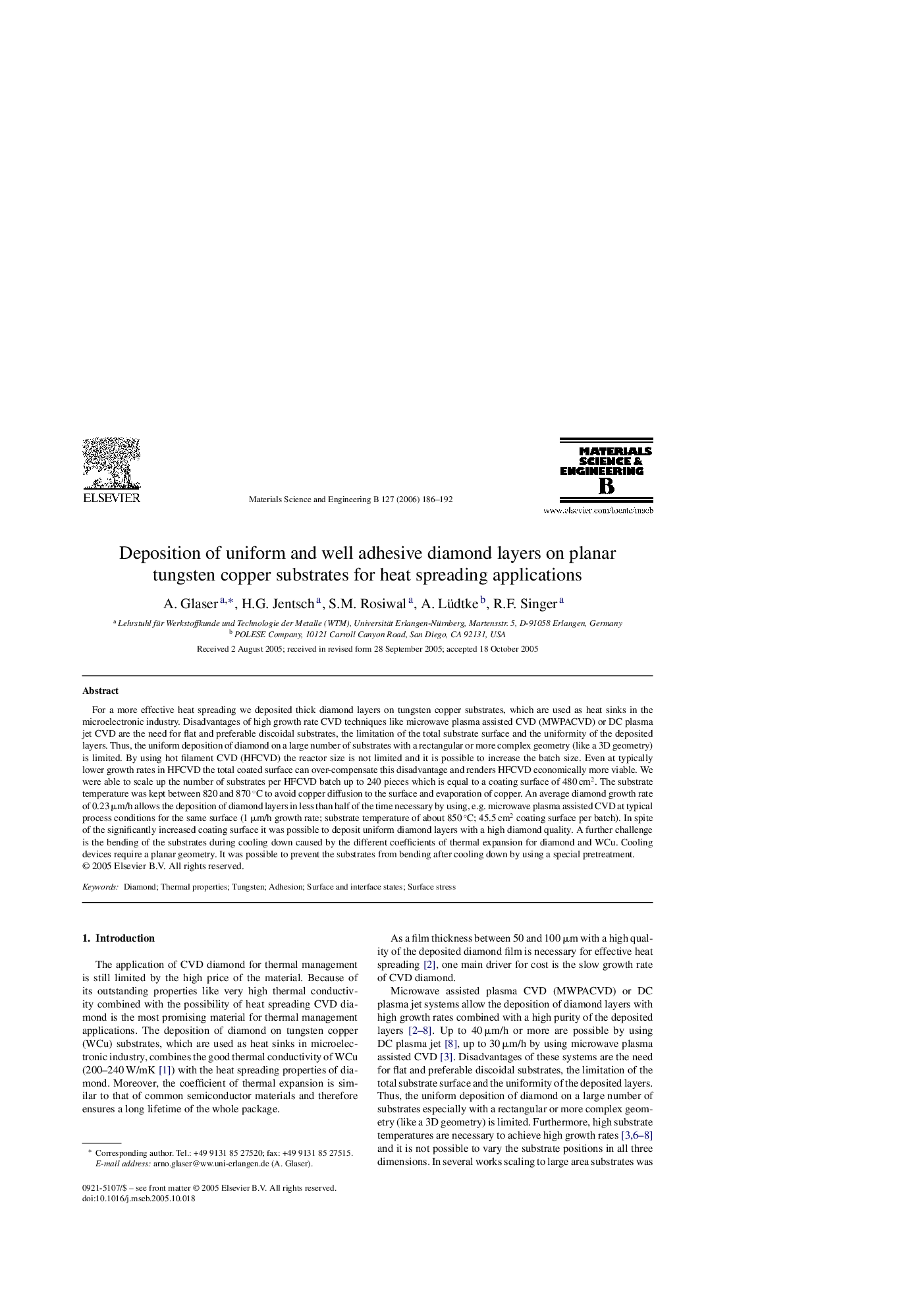| کد مقاله | کد نشریه | سال انتشار | مقاله انگلیسی | نسخه تمام متن |
|---|---|---|---|---|
| 1532050 | 1512024 | 2006 | 7 صفحه PDF | دانلود رایگان |

For a more effective heat spreading we deposited thick diamond layers on tungsten copper substrates, which are used as heat sinks in the microelectronic industry. Disadvantages of high growth rate CVD techniques like microwave plasma assisted CVD (MWPACVD) or DC plasma jet CVD are the need for flat and preferable discoidal substrates, the limitation of the total substrate surface and the uniformity of the deposited layers. Thus, the uniform deposition of diamond on a large number of substrates with a rectangular or more complex geometry (like a 3D geometry) is limited. By using hot filament CVD (HFCVD) the reactor size is not limited and it is possible to increase the batch size. Even at typically lower growth rates in HFCVD the total coated surface can over-compensate this disadvantage and renders HFCVD economically more viable. We were able to scale up the number of substrates per HFCVD batch up to 240 pieces which is equal to a coating surface of 480 cm2. The substrate temperature was kept between 820 and 870 °C to avoid copper diffusion to the surface and evaporation of copper. An average diamond growth rate of 0.23 μm/h allows the deposition of diamond layers in less than half of the time necessary by using, e.g. microwave plasma assisted CVD at typical process conditions for the same surface (1 μm/h growth rate; substrate temperature of about 850 °C; 45.5 cm2 coating surface per batch). In spite of the significantly increased coating surface it was possible to deposit uniform diamond layers with a high diamond quality. A further challenge is the bending of the substrates during cooling down caused by the different coefficients of thermal expansion for diamond and WCu. Cooling devices require a planar geometry. It was possible to prevent the substrates from bending after cooling down by using a special pretreatment.
Journal: Materials Science and Engineering: B - Volume 127, Issues 2–3, 25 February 2006, Pages 186–192